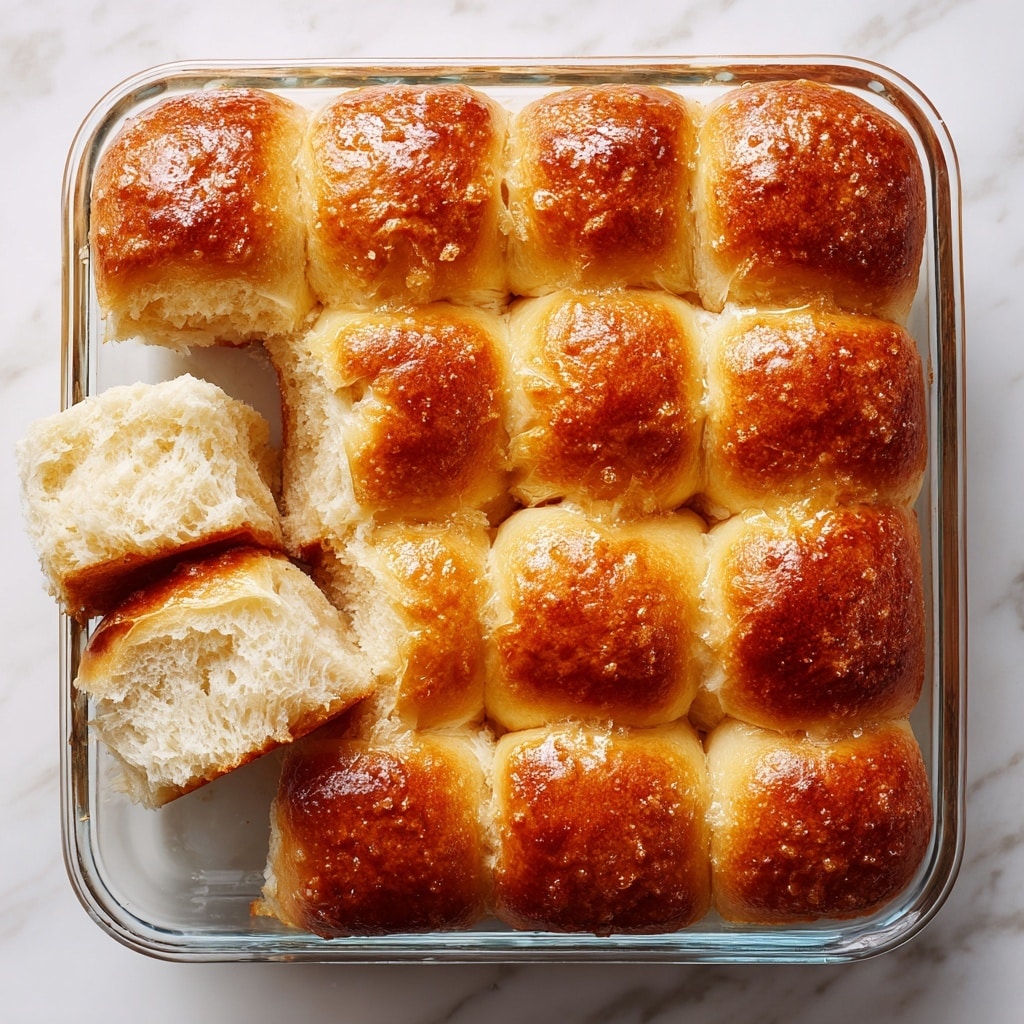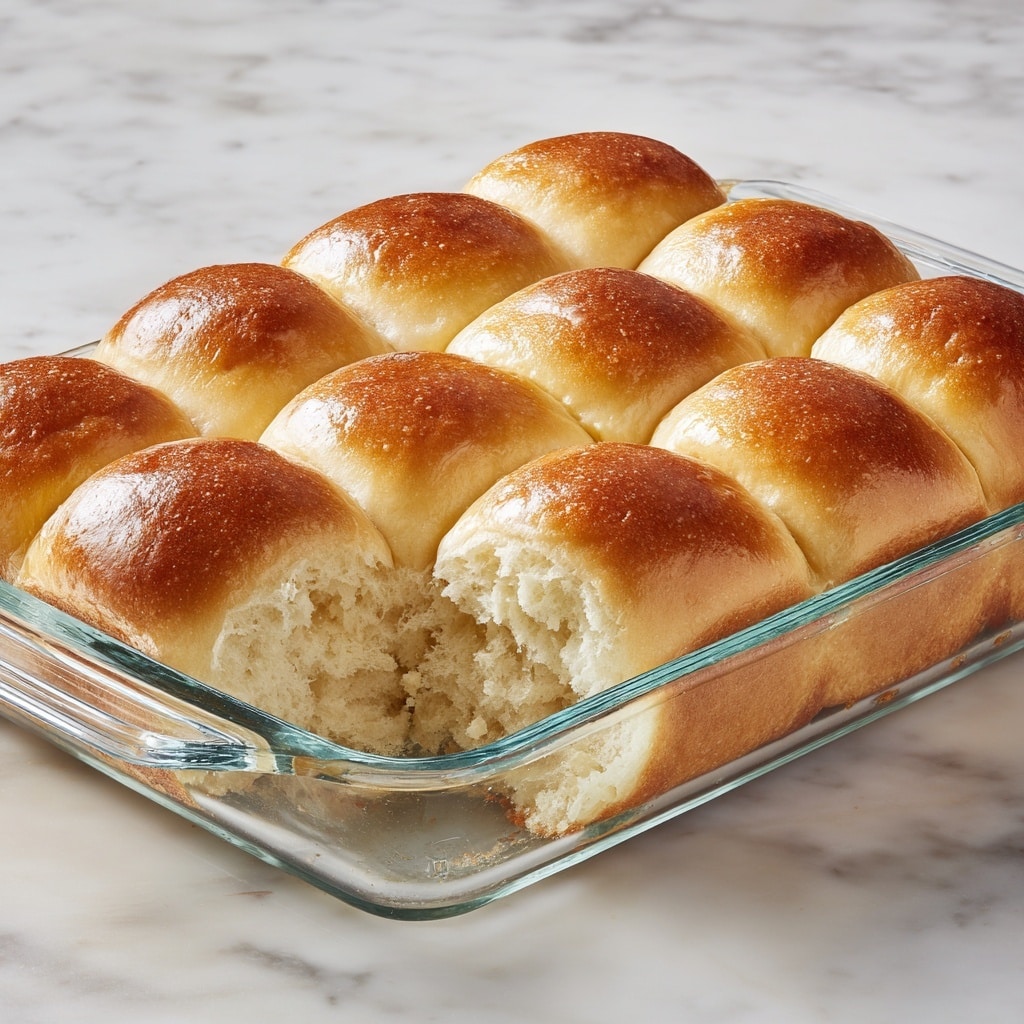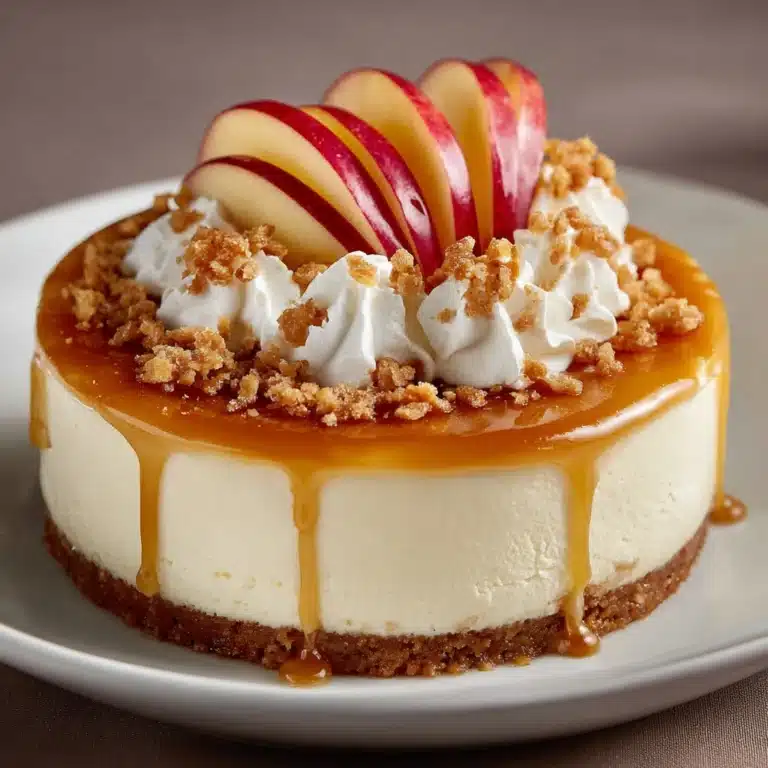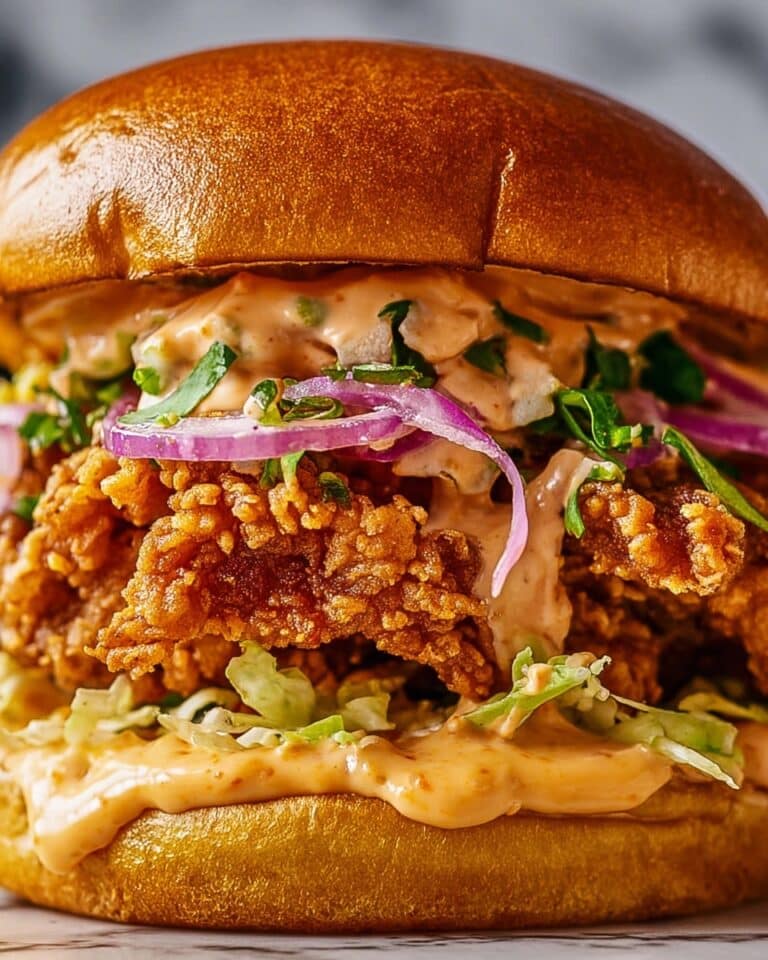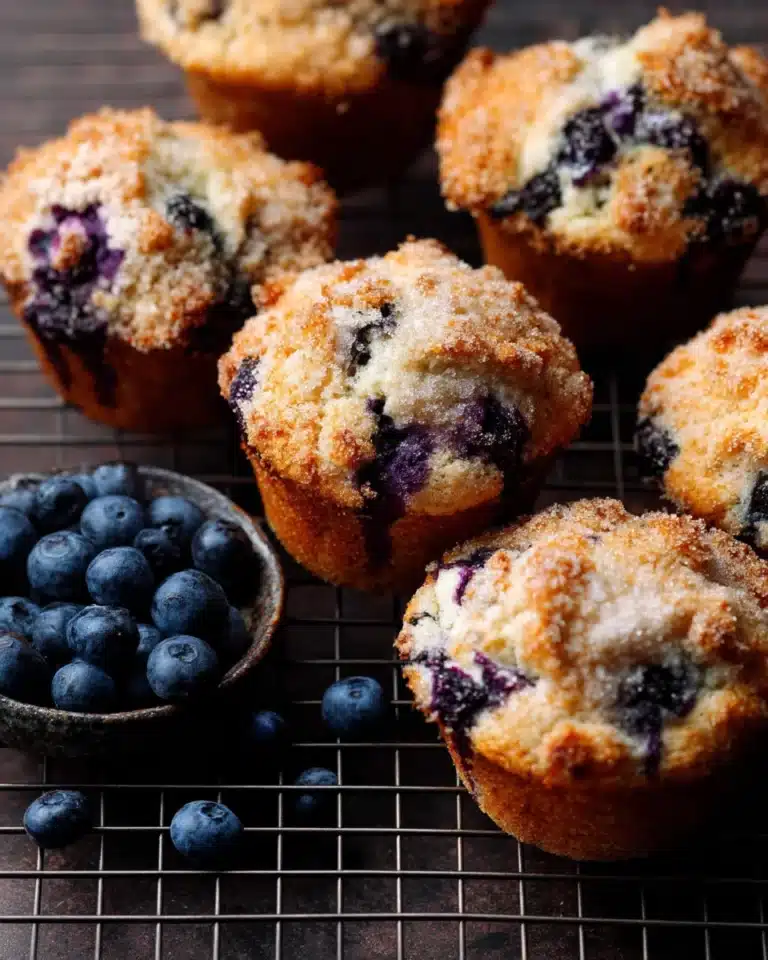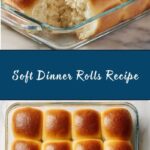If you’re looking to bring that perfect soft and pillowy texture to your dinner table, this Soft Dinner Rolls Recipe is an absolute must-try. These rolls strike a wonderful balance — fluffy on the inside with a tender crust that melts in your mouth. From the comforting aroma filling your kitchen during baking to their golden-brown tops, they make any meal feel extra special. Whether you’re serving a family feast or simply craving fresh homemade bread, these soft dinner rolls will quickly become a beloved staple.
Ingredients You’ll Need
Simple ingredients come together to create these irresistibly soft rolls. Each element plays a key role, whether it’s lending moisture, richness, or structure to the dough.
- Whole milk (1 cup, warmed to 110°F/43°C): Adds tenderness and helps activate the yeast for a light crumb.
- Platinum Yeast from Red Star instant yeast (2 1/4 teaspoons): Responsible for the perfect rise, making these rolls soft and fluffy.
- Granulated sugar (2 tablespoons, divided): Feeds the yeast and promotes browning for that beautiful golden crust.
- Large egg (1): Contributes richness and a lovely tender crumb.
- Unsalted butter (1/4 cup, softened): Essential for buttery flavor and a soft texture that’s simply irresistible.
- Salt (1 teaspoon): Balances sweetness and enhances overall flavor.
- All-purpose or bread flour (3 cups): Provides the structure for the rolls; bread flour yields a chewier texture, while all-purpose keeps them tender.
- Optional honey butter topping (2 tablespoons butter mixed with 1 tablespoon honey): Adds a glossy, sweet finishing touch that will make your rolls shine.
How to Make Soft Dinner Rolls Recipe
Step 1: Activate the Yeast
Start by whisking the warm milk, yeast, and 1 tablespoon of sugar together in your mixer bowl or a large bowl if mixing by hand. Let this sit for about 5 minutes until it’s bubbly and alive. This step ensures your yeast is active and ready to make your rolls wonderfully fluffy.
Step 2: Combine Ingredients
Add the remaining sugar, egg, softened butter, salt, and 1 cup of flour to the yeast mixture. Mix on low speed for 30 seconds, scraping down the bowl afterward. Then, gradually add the remaining flour and beat on medium speed until the dough pulls away from the sides. If the dough feels too sticky at this point, add flour one tablespoon at a time until it’s manageable but still soft.
Step 3: Knead the Dough
Keep the dough in your mixer and knead for 5 minutes with a dough hook, or transfer to a floured surface and knead by hand for the same amount of time. The dough should be soft and tacky but not sticky. The key is to develop the gluten so your rolls rise perfectly, achieving that signature softness with a slight bounce back when poked.
Step 4: First Rise
Lightly oil a large bowl and place your dough inside, turning it to coat all sides. Cover it and place in a warm spot for 1 to 2 hours until it doubles in size. This rise is where the magic happens and your dough transforms into something light, airy, and ready for shaping.
Step 5: Shape the Rolls
Once risen, gently punch down the dough to release the air. Divide it into 14 to 16 equal pieces—no need to be exact, just keep them roughly the same size. Shape each piece into a smooth ball, which helps the rolls bake evenly and develop that irresistible round shape.
Step 6: Second Rise
Arrange your dough balls in a greased 9×13 inch pan or two 9-inch pans, cover, and let them puff up for about an hour. This second rise gives the rolls their final lift and fluff before baking.
Step 7: Bake and Finish
Preheat your oven to 350°F (177°C), placing the rack lower so the rolls brown nicely without burning. Bake for 20 to 25 minutes until tops are golden brown, rotating the pan halfway. If the tops brown too fast, tent the pan loosely with foil. Once out of the oven, brush the rolls with the optional honey butter for an extra touch of shine and flavor before serving.
How to Serve Soft Dinner Rolls Recipe

Garnishes
To elevate these rolls at your table, brush them with melted butter or honey butter immediately after baking. A sprinkle of flaky sea salt or sesame seeds before baking can add a delightful texture and flavor twist as well.
Side Dishes
Soft dinner rolls are perfect companions to hearty soups, rich stews, and juicy roasts. They’re equally divine alongside fresh salads or slathered with butter and jam for a simple, comforting snack.
Creative Ways to Present
Try slicing these rolls horizontally and filling them with pulled pork, chicken salad, or your favorite sandwich fixings. For a brunch twist, serve them alongside scrambled eggs and smoked salmon or use as a base for mini slider burgers.
Make Ahead and Storage
Storing Leftovers
Keep your leftover rolls in a tightly sealed container or zip-top bag at room temperature for up to 2-3 days. This helps retain their soft texture and prevents them from drying out.
Freezing
Soft dinner rolls freeze beautifully. Place completely cooled rolls in an airtight freezer-safe bag or container, separating layers with parchment paper if stacking. Freeze for up to 3 months without losing their tender crumb.
Reheating
To enjoy rolls fresh again, warm them in the oven at 300°F (150°C) for 10-15 minutes. Cover loosely with foil to keep moisture in. Alternatively, microwave for 15-20 seconds wrapped in a damp paper towel to revive softness quickly.
FAQs
Can I substitute all-purpose flour with bread flour in this recipe?
Absolutely! Bread flour will give your rolls a slightly chewier texture and more structure due to its higher protein content, while all-purpose flour keeps them tender and soft. Either works wonderfully depending on your preference.
How important is the milk temperature for activating the yeast?
The milk should be warm, around 110°F (43°C), which is ideal for activating yeast. Too hot and you risk killing the yeast; too cool and it won’t activate properly, resulting in less rise.
Can I make these rolls without a stand mixer?
Yes! While a stand mixer makes kneading easier, you can mix and knead by hand using a large mixing bowl and a wooden spoon or silicone spatula. It might take some muscle, but the result will be just as amazing.
Why do my rolls sometimes turn out dense instead of soft?
Common causes include not kneading the dough enough to develop gluten, using too much flour, or not allowing the dough to rise fully. Follow the recipe’s timing and handle the dough gently but thoroughly for the best soft texture.
Is the honey butter topping necessary?
The honey butter is optional but highly recommended. It adds a lovely sweet, glossy finish that enhances both appearance and flavor. If you want pure buttery goodness, simply brush with melted butter alone.
Final Thoughts
Now that you have this foolproof Soft Dinner Rolls Recipe in your culinary toolkit, there’s no reason to settle for store-bought rolls again. These are soft, fluffy, and simply bursting with flavor—a true joy to bake and devour. I promise once you try them fresh from your oven, they’ll become a favorite that you’ll want to share every time you sit down for a meal.
Print
Soft Dinner Rolls Recipe
- Prep Time: 15 minutes
- Cook Time: 25 minutes
- Total Time: 3 hours 45 minutes
- Yield: 14 servings
- Category: Bread
- Method: Baking
- Cuisine: American
Description
These Soft Dinner Rolls are fluffy, tender, and perfect for any meal. Made with warm milk, yeast, butter, and a touch of sugar, they deliver a classic homemade bread experience with a slightly sweet and buttery finish. The recipe includes clear steps to make the dough from scratch, knead it to perfection, and bake beautiful golden rolls that stay soft for days.
Ingredients
For the Dough
- 1 cup (240ml) whole milk, warmed to about 110°F (43°C)
- 2 and 1/4 teaspoons Platinum Yeast from Red Star instant yeast (1 standard packet)
- 2 Tablespoons granulated sugar, divided
- 1 large egg
- 1/4 cup (4 Tbsp; 56g) unsalted butter, softened to room temperature and cut into 4 pieces
- 1 teaspoon salt
- 3 cups (390g) all-purpose flour or bread flour (spooned & leveled)
Optional Topping
- 2 Tablespoons (28g) melted unsalted butter mixed with 1 Tablespoon honey
Instructions
- Prepare the dough: Whisk the warm milk, yeast, and 1 tablespoon of sugar together in the bowl of your stand mixer. Cover and allow to sit for 5 minutes until the mixture is foamy, activating the yeast.
- Mix the dough: Add the remaining sugar, egg, softened butter, salt, and 1 cup of flour to the yeast mixture. Using a dough hook or paddle attachment, mix on low speed for 30 seconds, scraping the bowl sides, then add the remaining flour. Beat on medium speed until the dough forms and pulls away from the bowl sides, about 2 minutes. If the dough is too wet, add flour one tablespoon at a time to achieve a soft, slightly sticky but manageable dough.
- Knead the dough: Continue kneading in the mixer for an additional 5 minutes or knead by hand on a lightly floured surface for 5 minutes. If dough gets too sticky, add flour sparingly. The dough should pass the windowpane test or slowly bounce back when poked.
- First rise: Lightly grease a large bowl, place the dough inside, turning it to coat with oil. Cover with foil, plastic wrap, or a clean towel. Let it rise in a warm place for 1-2 hours until doubled in size.
- Prepare the baking pan: Grease a 9×13 inch baking pan or two 9-inch square or round pans. Alternately, use a cast iron skillet or a lined baking sheet.
- Shape the rolls: Punch down the risen dough to release air. Divide into 14-16 equal pieces and shape each into smooth balls. Arrange them in the prepared pan.
- Second rise: Cover the rolls with foil, plastic wrap, or a clean towel. Let them rise until puffy, about 1 hour.
- Preheat the oven: Adjust oven rack to a lower position and preheat to 350°F (177°C) to prevent browning the tops too much during baking.
- Bake the rolls: Bake for 20-25 minutes until golden brown, rotating the pan halfway through for even cooking. If tops brown too quickly, tent with foil. Remove from oven.
- Optional topping and serving: Brush warm rolls with melted butter mixed with honey for a glossy, sweet finish. Let cool slightly before serving.
- Storage: Store leftover rolls tightly covered at room temperature for 2-3 days or in the refrigerator up to 1 week.
Notes
- Use room temperature ingredients for best yeast activation and dough consistency.
- The dough should be soft and slightly sticky but manageable; avoid adding too much flour which can dry out the rolls.
- The windowpane test helps ensure proper gluten development in kneading.
- Letting the rolls rise near a warm environment helps speed fermentation.
- Tent with foil during baking if tops brown too quickly to prevent burning.
- Using a stand mixer with a dough hook simplifies kneading but hand kneading is equally effective.
- Honey butter topping adds a lovely sweet glaze but is optional.
- The rolls freeze well if you want to store longer; thaw at room temperature before serving.

